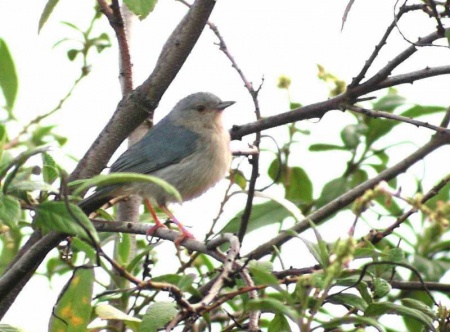- Conirostrum bicolor
Identification
11.4 cm.
Adult: Grayish blue upperparts. Underparts creamy.
The immature birds are dull grayish above, yellowish on the face and breast and paler whitish on the lower belly.
They also have a very pointed bill and pinkish legs.
Distribution
Caribbean and South America
Caribbean: Trinidad
South America: Colombia, Venezuela, Guyana, Suriname, French Guiana, Brazil, Ecuador, Peru
Taxonomy
Subspecies[1]
There are 2 subspecies:
- C. b. bicolor:
- C. b. minus:
Habitat
Found primarily in mangroves along the coast and along the Amazon River.
Behaviour
Diet
The diet includes insects and seeds.
Vocalisation
The call is a thin tseep.
References
- Clements, JF. 2008. The Clements Checklist of Birds of the World. 6th ed., with updates to December 2008. Ithaca: Cornell Univ. Press. ISBN 978-0801445019.
- Ber van Perlo. 2009. A field guide to the Birds of Brazil. Oxford University Press, New York, NY, USA. ISBN 978-0-19-530155-7
- Ridgely and Tudor 2009. Field guide to the songbirds of South America - the passerines. University of Texas Press, Austin, TX, USA. ISBN 978-0-292-71979-8
- Kenefick, Restall, Hayes, 2007. Field guide to the birds of Trinidad and Tobago. Yale University Press. ISBN 978-0-300-13557-2
- Avibase
- Wikipedia
Recommended Citation
- BirdForum Opus contributors. (2024) Bicolored Conebill. In: BirdForum, the forum for wild birds and birding. Retrieved 10 November 2024 from https://www.birdforum.net/opus/Bicolored_Conebill





